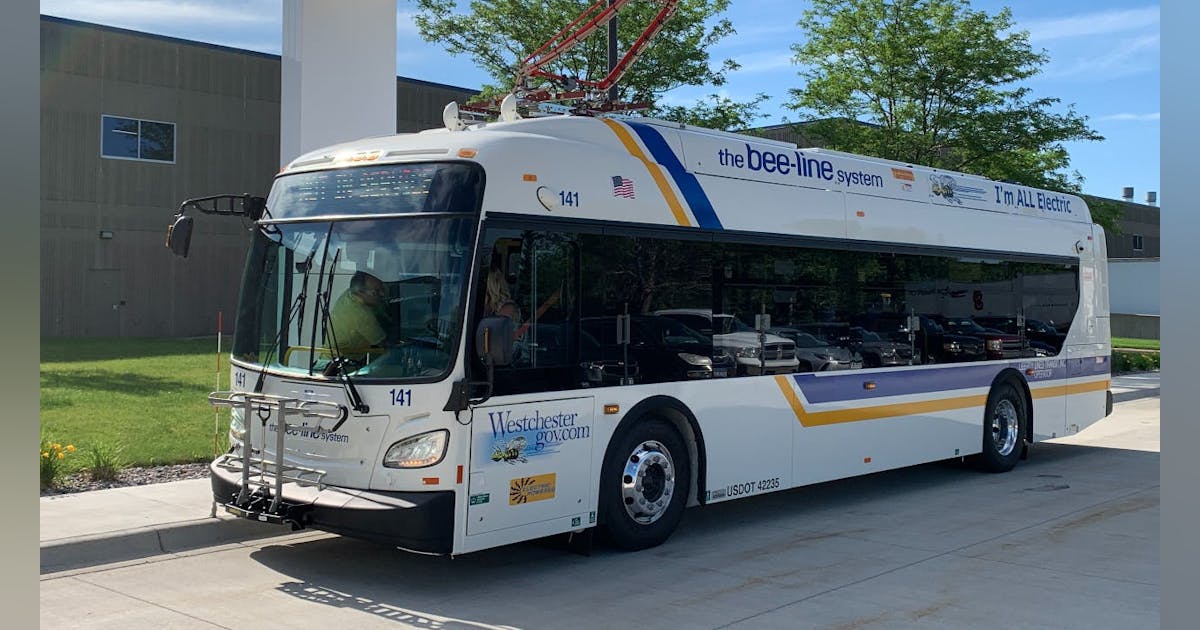Assessing The Viability Of Hydrogen And Battery Buses Across Europe

Table of Contents
Battery Electric Buses (BEBs): The Current Market Leader
Technological Maturity and Infrastructure
Battery electric buses (BEBs) currently dominate the market for zero-emission buses in Europe. Their technological maturity is a significant advantage. However, several factors influence their viability.
- Advantages: Established technology, relatively mature charging infrastructure in some regions (particularly depot charging), decreasing battery costs.
- Disadvantages: Range anxiety remains a concern, especially for longer routes. Charging times can be lengthy, impacting operational efficiency. Battery lifespan and replacement costs are significant, and increased electricity demand from widespread BEB adoption can strain existing power grids.
Successful BEB deployments are evident in cities like Amsterdam, London, and Oslo, where significant investments in charging infrastructure have facilitated their integration into public transport networks. However, the current market share of BEBs varies considerably across Europe, influenced by factors such as available funding, existing infrastructure, and regional policy support. Statistics from organizations like the European Automobile Manufacturers' Association (ACEA) reveal a rapidly growing but still relatively small percentage of the total bus fleet.
Cost-Effectiveness and Lifecycle Analysis
The total cost of ownership (TCO) for BEBs is a critical factor determining their widespread adoption. While the initial purchase price might be higher than that of diesel buses, several factors influence the overall TCO:
- Factors influencing TCO: Electricity prices (highly variable across Europe), government subsidies and incentives, advancements in battery technology leading to longer lifespans and reduced replacement costs.
Comparing the TCO of BEBs to diesel buses reveals significant long-term cost savings, particularly when considering reduced fuel and maintenance costs. Furthermore, life cycle assessments demonstrate the considerable environmental benefits of BEBs, resulting in lower greenhouse gas emissions and reduced air pollution compared to their diesel counterparts.
Hydrogen Fuel Cell Buses: A Promising but Emerging Technology
Technological Challenges and Infrastructure Development
Hydrogen fuel cell buses (HFCBs) represent a promising alternative, offering several advantages over BEBs. However, their widespread adoption faces considerable technological and infrastructural hurdles.
- Advantages: Longer range compared to BEBs, significantly faster refueling times, potentially cleaner operation with green hydrogen.
- Disadvantages: The lack of widespread hydrogen refueling infrastructure is a major barrier. The production of green hydrogen (through renewable energy sources) remains expensive and energy-intensive. Higher initial investment costs compared to BEBs are also a significant deterrent.
The development of efficient and cost-effective green hydrogen production methods is crucial for the long-term viability of HFCBs. Ongoing research and development efforts focus on improving fuel cell efficiency, reducing costs, and enhancing hydrogen storage and transportation technologies. Addressing range anxiety is less of a concern with HFCBs, given their longer range capabilities.
Economic Viability and Policy Support
The economic viability of hydrogen buses hinges on several factors:
- Factors affecting economic viability: The cost of hydrogen production and refueling, the availability of government incentives and subsidies, the potential for economies of scale as adoption increases.
Public-private partnerships are essential to foster the development of hydrogen refueling infrastructure. Government policies play a crucial role in supporting the transition to hydrogen-powered buses through financial incentives, regulatory frameworks, and targeted research funding. Compared to BEBs, the current economic viability of hydrogen buses is significantly lower, though this is expected to change with technological advancements and increased economies of scale.
Comparative Analysis: BEBs vs. Hydrogen Buses Across Europe
Suitability for Different Urban Environments
The suitability of BEBs and HFCBs varies depending on the specific urban context:
- Factors to consider: Route lengths, topography (steep hills can impact battery range), traffic conditions (frequent stops and idling can reduce efficiency), available space for charging/refueling infrastructure.
In dense urban areas with shorter routes and sufficient charging infrastructure, BEBs are currently a more practical solution. However, in sprawling suburbs or regions with challenging topography, HFCBs might offer advantages due to their extended range and faster refueling times. Cities like Hamburg are already experimenting with both technologies to determine the best fit for their unique needs.
Environmental Impact Assessment
A comprehensive lifecycle assessment is crucial to compare the environmental impact of BEBs and HFCBs:
- Analyze: Greenhouse gas emissions (including those associated with hydrogen production), air pollution, and resource consumption during manufacturing, operation, and end-of-life management.
While BEBs offer lower operational emissions, the environmental impact of battery production and disposal needs careful consideration. The environmental footprint of HFCBs depends heavily on the method of hydrogen production; green hydrogen offers a pathway towards carbon neutrality, whereas grey hydrogen (produced from fossil fuels) offsets many of the environmental benefits.
Conclusion: Choosing the Right Path Towards Sustainable Public Transport in Europe
The comparative analysis reveals that both battery electric and hydrogen buses offer significant advantages in transitioning towards a sustainable public transport future in Europe. However, their suitability depends on specific regional conditions and technological advancements. BEBs represent a mature technology with a readily available (though still developing) infrastructure in some areas, making them suitable for many urban environments. HFCBs, while currently facing higher costs and infrastructural challenges, offer longer range and faster refueling, making them attractive for specific applications. Policy support, substantial investment in infrastructure, and ongoing research and development are essential to overcome these challenges and unlock the full potential of both hydrogen and battery buses. A holistic approach, considering regional needs and the specific characteristics of each technology, is crucial to ensure a successful and sustainable transition for Europe's public transport systems. Further investment and research in both hydrogen buses and battery electric buses are needed to build a truly green future for European cities.

Featured Posts
-
 A List Stars Dazzle At The Met Gala Red Carpet
May 07, 2025
A List Stars Dazzle At The Met Gala Red Carpet
May 07, 2025 -
 See Rihannas Latest Look Stylish And Warm In Santa Monica
May 07, 2025
See Rihannas Latest Look Stylish And Warm In Santa Monica
May 07, 2025 -
 Rihanna Fuels Speculation New Romance With A Ap Rocky
May 07, 2025
Rihanna Fuels Speculation New Romance With A Ap Rocky
May 07, 2025 -
 Stansted To Casablanca Details On The New Airport Connection
May 07, 2025
Stansted To Casablanca Details On The New Airport Connection
May 07, 2025 -
 Wto Accession Navigating The Privilege Dilemma
May 07, 2025
Wto Accession Navigating The Privilege Dilemma
May 07, 2025
Latest Posts
-
 76
May 08, 2025
76
May 08, 2025 -
 2 0 76
May 08, 2025
2 0 76
May 08, 2025 -
 76 2 0
May 08, 2025
76 2 0
May 08, 2025 -
 The Night Inter Milan Beat Barcelona To Reach The Champions League Final
May 08, 2025
The Night Inter Milan Beat Barcelona To Reach The Champions League Final
May 08, 2025 -
 Inters All Time Victory Reaching The Champions League Final By Defeating Barcelona
May 08, 2025
Inters All Time Victory Reaching The Champions League Final By Defeating Barcelona
May 08, 2025
